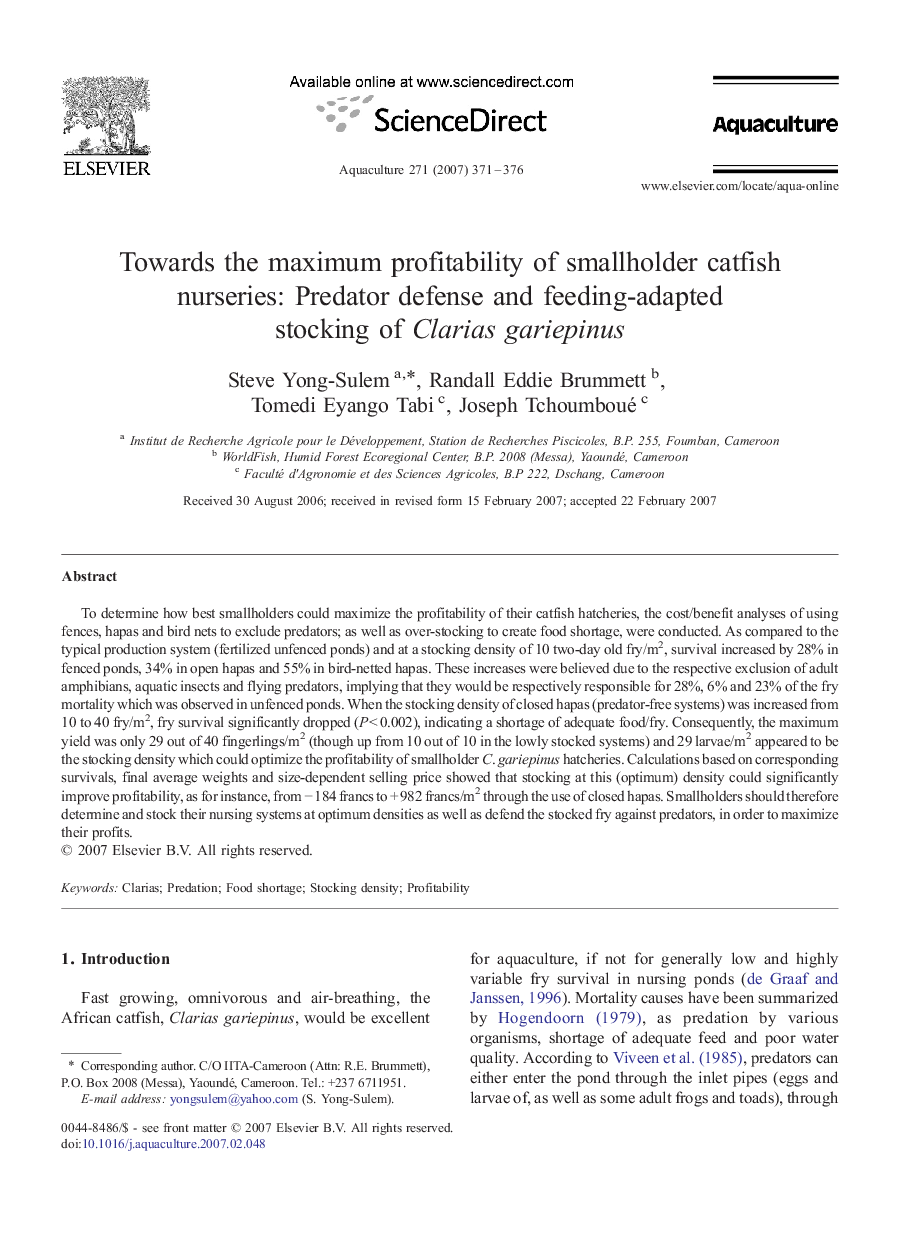| کد مقاله | کد نشریه | سال انتشار | مقاله انگلیسی | نسخه تمام متن |
|---|---|---|---|---|
| 2425161 | 1552971 | 2007 | 6 صفحه PDF | دانلود رایگان |

To determine how best smallholders could maximize the profitability of their catfish hatcheries, the cost/benefit analyses of using fences, hapas and bird nets to exclude predators; as well as over-stocking to create food shortage, were conducted. As compared to the typical production system (fertilized unfenced ponds) and at a stocking density of 10 two-day old fry/m2, survival increased by 28% in fenced ponds, 34% in open hapas and 55% in bird-netted hapas. These increases were believed due to the respective exclusion of adult amphibians, aquatic insects and flying predators, implying that they would be respectively responsible for 28%, 6% and 23% of the fry mortality which was observed in unfenced ponds. When the stocking density of closed hapas (predator-free systems) was increased from 10 to 40 fry/m2, fry survival significantly dropped (P < 0.002), indicating a shortage of adequate food/fry. Consequently, the maximum yield was only 29 out of 40 fingerlings/m2 (though up from 10 out of 10 in the lowly stocked systems) and 29 larvae/m2 appeared to be the stocking density which could optimize the profitability of smallholder C. gariepinus hatcheries. Calculations based on corresponding survivals, final average weights and size-dependent selling price showed that stocking at this (optimum) density could significantly improve profitability, as for instance, from − 184 francs to + 982 francs/m2 through the use of closed hapas. Smallholders should therefore determine and stock their nursing systems at optimum densities as well as defend the stocked fry against predators, in order to maximize their profits.
Journal: Aquaculture - Volume 271, Issues 1–4, 3 October 2007, Pages 371–376